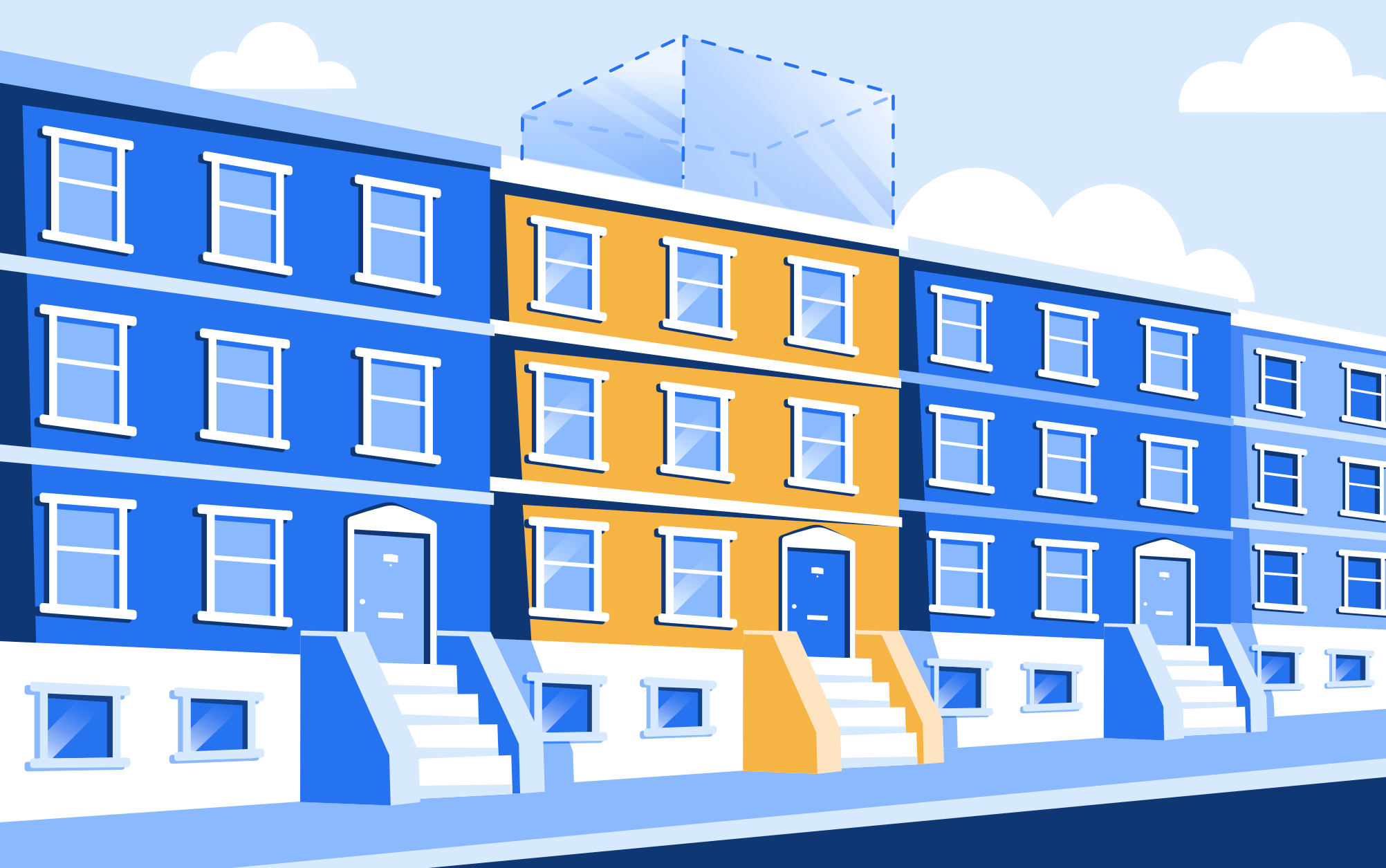If you’re in the market for a townhouse, especially in Brooklyn, you’ll likely see “additional FAR” touted as an opportunity to increase the size of the home and create value.
While that certainly is a possibility, it’s also not that simple. Let's dive into FAR - what it is, if it's valuable and if you'll actually use it.
What is Floor Area Ratio (FAR) in NYC?
FAR is short for “Floor Area Ratio” and is a ratio of the square footage of a building to the square footage of its lot. NYC's zoning laws dictate the maximum FAR and therefore how big of a building can be built on a specific lot.
This is why you usually won’t see a skyscraper in the middle of a block of townhouses - the area isn't zoned for it and there's a cap on what and how much can be built.
How to Find and Calculate FAR
To get the FAR, you simply divide the size of a building by the size of the lot. The math is easy but you need to know where to get the info.
Let’s look at 131 Noble Street which Yoreevo’s buyers recently purchased (and saved over $69,000 with a commission rebate).
The main source of information for anything FAR related will be NYC’s Zoning and Land Use Map (ZoLa). There you will find both the size of the lot and the size of the home so you can calculate the FAR.
If you look up 131 Noble Street on ZoLa, you’ll see the lot is 18.75’ wide and 100’ deep or 1,875 square feet. The house itself is 3,080 square feet so now we just need to divide - the FAR is 3,080 / 1,875 or 1.64.
 Now that we have the FAR of the house, we need to compare it to what’s allowed. The home is located in the R6B Zoning District where the maximum FAR is usually 2.0 (more than the current 1.64) so 131 Noble Street is not using all of its buildable space and could be expanded.
Now that we have the FAR of the house, we need to compare it to what’s allowed. The home is located in the R6B Zoning District where the maximum FAR is usually 2.0 (more than the current 1.64) so 131 Noble Street is not using all of its buildable space and could be expanded.
How Valuable is Additional FAR?
Townhouse listing agents will be quick to point out there is additional FAR available and pitch it as an unrealized opportunity for you, the buyer, to profit. The idea is you can add square footage to the building, increase the value and pocket a tidy profit but Yoreevo usually tells our buyers to severely discount any such opportunity and there are a couple of reasons why.
Most significantly, adding to a NYC townhouse is complicated. You’ll need to hire a bunch of people to walk you through the process - an architect, contractor and expeditor will be necessary to understand the myriad of steps, permits, construction limitations, etc that need to be considered before you even start. This early planning stage is also risky because you may spend a lot of time and money on plans that turn out to be illegal or impractical.
And like everything else in NYC, construction is expensive. These days, the ballpark cost for a quality brownstone renovation is around $500 per square foot and renovations are simpler and cheaper than additions. When you start looking at the real numbers, the “arbitrage” between the cost of adding new space and the going rate for existing space isn’t that attractive. Can it work out? Absolutely. Is it a no brainer? Absolutely not. Developers who do this for a living passed on the opportunity so it’s hard to see why you’ll be better positioned than a professional.
One other thing to consider about excess FAR is where will you put the additional square footage? The only options are almost always on the back or top of the home and both of these require significant changes to the structure and layout of the home.
We look at additional FAR as a free option. Down the road if you want to add a sunroom on top or an addition on the back of the home, it’s a possibility but it will likely be dictated more by your lifestyle wants and shouldn’t be a large part of the reason you buy a particular property.
What Happens If A Property’s FAR is Above Its Maximum?
For a property to be above its maximum FAR, there was likely illegal construction at some point. For example, an addition could have been tacked on to the back of the home without filing the proper paperwork or telling the Department of Buildings.
In such a situation, you should simply avoid the property. If you buy the home, you'll also be buying the illegal construction which could (and likely will) cause problems when you sell.
In an extreme situation when a property is above its maximum FAR, the Department of Buildings could require you to correct it. Since you can’t enlarge the lot, your only option is shrinking the building which would be doubly painful - you’d have to spend money to reduce the size and value of the home.
What Dictates Maximum FAR?
A property’s maximum FAR is governed by zoning laws which are complicated to say the least. If you pull up the Zoning Map referenced above, you’ll see a color coded map showing the various zoning districts across the city but that’s just the first level of complexity.
While the entire map is red, purple or yellow, there are way more than three zoning districts and each of those zoning districts often have subdistricts. For example, 131 Noble Street is R6B - a specific type of residential housing predominantly found in Brooklyn, Queens and the Bronx.
Even when you drill down to that level of detail, it’s often not clear what's allowed. If you look at the R6B guide, you’ll see a number of qualifications governing what can be built and when.
All of this is to say that if you are seriously considering a home with excess FAR, you should hire an architect or another professional with detailed knowledge of zoning rules. The last thing you want to find out after buying a home is that your dream plans are illegal, impractical or both.
Buying any townhouse is a complicated process and it’s especially important to have an experienced agent in your corner to answer your questions and flag potential issues. Yoreevo has worked many townhouse buyers in Brooklyn, Queens and Manhattan. If you’re in the market, we would be happy to help with your purchase and get you NYC’s largest commission rebate — averaging more than $24,000 back at closing! You can reach us at info@yoreevo.com or 212-365-0151.
Yoreevo is a real estate brokerage. This post is meant to be information and should not be relied upon for legal, zoning or construction advice. Please contact a qualified professional before considering any purchase.

